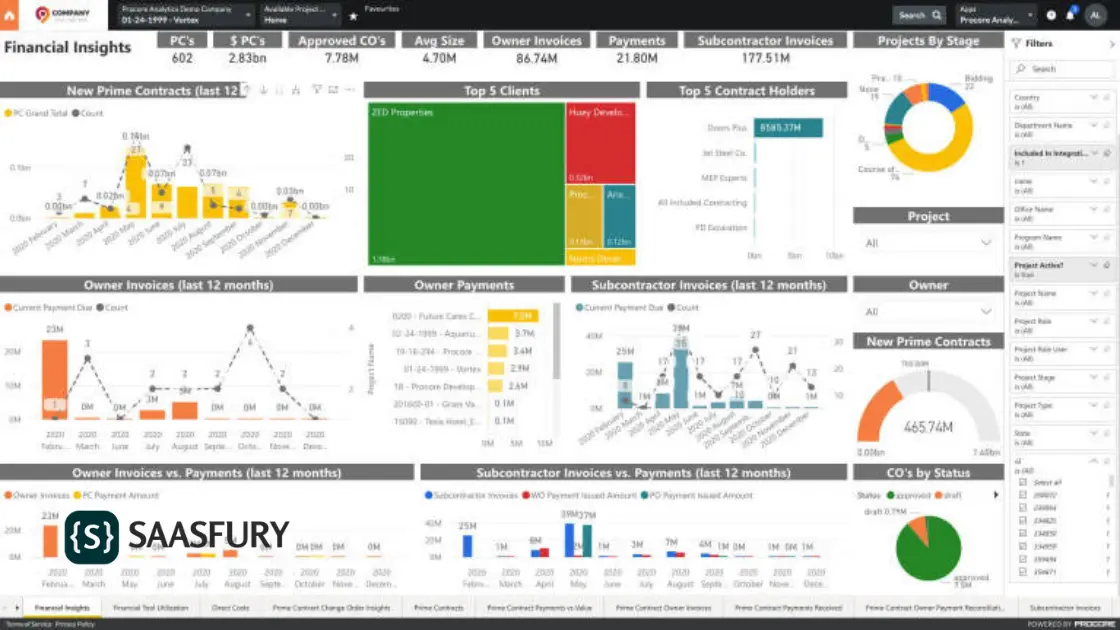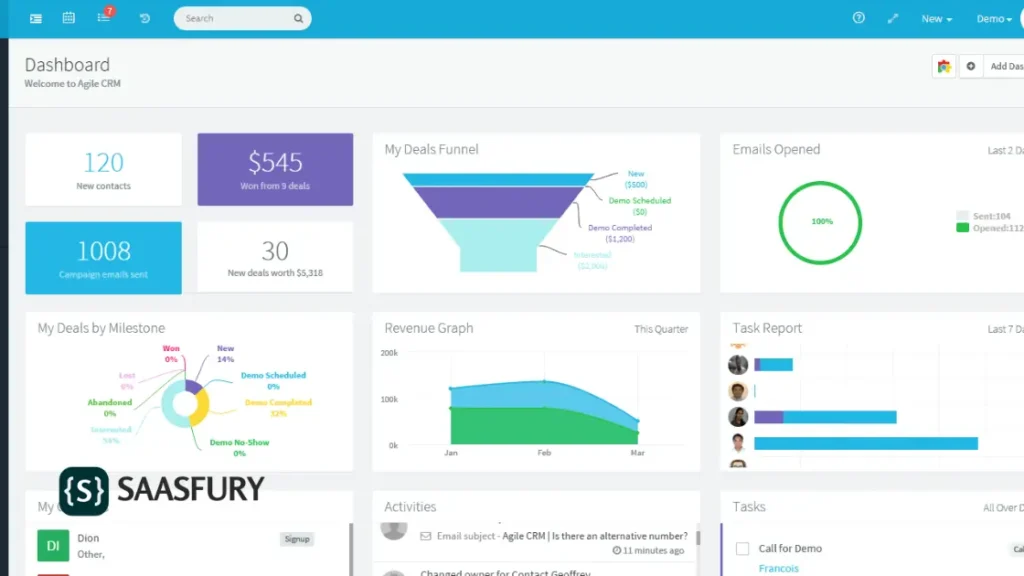Lead Generation Software Integrate With CRM systems by syncing contact information and tracking interactions. This ensures seamless data flow between platforms.
Lead generation is crucial for any business aiming for growth. Integrating lead generation software with CRM systems optimizes this process. It allows automatic data transfer, reducing manual entry errors. Businesses can track customer journeys and interactions more efficiently. This integration helps in creating personalized marketing strategies.
It ensures that sales teams have up-to-date information. Thus, it enhances customer relationship management. A streamlined process saves time and boosts productivity. This synergy between lead generation tools and CRM systems is essential for any business wanting to scale efficiently.
Table of Contents
Introduction To Lead Generation Software Integrate With CRM
Lead generation software helps businesses find potential customers. It gathers contact details from various sources. This software streamlines the process of identifying and capturing leads.
By using this software, companies can save time and resources. It allows them to focus on nurturing relationships with potential clients. This leads to increased sales and business growth.

Purpose And Benefits
The main purpose of lead generation software is to automate lead collection. It helps in identifying potential customers with ease. Below are some benefits:
- Efficiency: Automates repetitive tasks.
- Accuracy: Reduces human errors.
- Scalability: Handles large volumes of data.
- Integration: Works with CRM systems seamlessly.
By integrating with CRM systems, the software ensures data consistency. This leads to better customer insights and improved marketing strategies.
Market Trends
The market for lead generation software is growing rapidly. Businesses are investing more in such tools to stay competitive. Here are some current trends:
| Trend | Description |
|---|---|
| AI Integration | Using artificial intelligence to predict customer behavior. |
| Data Analytics | Enhanced data analysis for better decision-making. |
| Multi-Channel Lead Capture | Collecting leads from various sources like social media. |
These trends indicate a shift towards more intelligent and data-driven lead generation. Companies adopting these trends will likely see better results.
Understanding CRM Systems

Customer Relationship Management (CRM) systems are essential for managing customer interactions. They help businesses streamline processes and improve customer satisfaction. CRM systems store customer data, track interactions, and automate workflows.
Core Functions
CRM systems have several core functions that aid in managing customer relationships effectively:
- Contact Management: Store and manage customer contact information.
- Interaction Tracking: Track customer interactions and communication history.
- Sales Management: Manage sales pipelines and track sales opportunities.
- Workflow Automation: Automate repetitive tasks and processes.
- Customer Support: Manage customer support tickets and issues.
Key Features
CRM systems offer various features to enhance business operations. Here are some key features:
| Feature | Description |
|---|---|
| Analytics and Reporting | Generate insights from customer data. |
| Mobile Access | Access CRM data on mobile devices. |
| Third-party Integration | Integrate with other business tools. |
| Customization | Tailor the CRM to meet business needs. |
| Security | Ensure data protection and compliance. |
These key features make CRM systems invaluable for businesses. They help in managing customer relationships efficiently and effectively.
Integration Benefits
Integrating lead generation software with CRM systems offers numerous benefits. It streamlines processes and provides a more holistic view of customer interactions. This combination enhances the efficiency of sales and marketing teams, leading to better results.
Improved Data Accuracy
Data accuracy is crucial for any business. Lead generation software integrates with CRM systems to ensure data consistency. It automatically updates customer information, reducing manual errors.
Accurate data helps teams make informed decisions. It also saves time spent on data entry and verification. This leads to a more efficient workflow and improved customer satisfaction.
Enhanced Customer Insights
The integration provides enhanced customer insights. Lead generation software collects valuable data. When integrated with CRM, this data becomes more accessible.
Teams can view comprehensive profiles of leads and customers. This includes interaction history, preferences, and behaviors. These insights help tailor marketing campaigns and sales strategies.
Understanding customer needs leads to better engagement and higher conversion rates. Enhanced insights drive business growth and foster stronger customer relationships.
Integration Methods
Lead generation software and CRM systems are crucial for business growth. Understanding their integration methods can maximize their potential. This section explores various integration methods, including API Integration and Third-Party Tools.
API Integration
API integration is a direct method for connecting lead generation software with CRM systems. APIs, or Application Programming Interfaces, allow different software to communicate. This seamless interaction ensures data flows smoothly between systems.
Using APIs, you can automate data transfers. For instance, new leads captured by your lead generation software can automatically populate your CRM. This reduces manual data entry and errors. APIs also enable real-time updates, keeping your CRM current.
Here are some key benefits of API integration:
- Real-time data synchronization: Instant data transfer keeps records updated.
- Reduced manual work: Automation saves time and reduces errors.
- Enhanced data accuracy: Consistent data across platforms ensures reliability.
Third-party Tools
Third-party tools offer another way to integrate lead generation software with CRM systems. These tools act as a bridge between the two platforms. They often come with pre-built connectors, making integration easier.
Using third-party tools, businesses can enjoy the following advantages:
- Ease of use: Pre-built connectors simplify the integration process.
- Flexibility: Supports various software combinations and configurations.
- Scalability: Easily adapt to growing business needs and additional integrations.
Popular third-party tools include Zapier, Integromat, and MuleSoft. These tools support different CRM and lead generation software, offering versatile integration options.
| Integration Method | Key Benefits |
|---|---|
| API Integration | Real-time synchronization, reduced manual work, enhanced data accuracy |
| Third-Party Tools | Ease of use, flexibility, scalability |
Setting Up Integration
Setting up integration between lead generation software and CRM systems can boost your marketing efforts. This process ensures seamless data flow and improves sales efficiency. Below, we will discuss the initial setup and provide configuration tips to make this integration smooth.
Initial Setup
Start the initial setup by choosing compatible software. Ensure your lead generation software supports integration with your CRM system.
Follow these steps to begin:
- Install the Lead Generation Software: Download and install the software on your system.
- Access API Keys: Obtain API keys from both your lead generation tool and CRM.
- Connect APIs: Use the API keys to connect both systems.
- Verify Connection: Test the connection to ensure data flows correctly.
Configuration Tips
Proper configuration is crucial for smooth integration. Here are some tips:
- Map Data Fields: Ensure data fields in both systems match.
- Set Up Triggers: Configure triggers to automate data transfer.
- Test Data Transfer: Run tests to ensure data transfers accurately.
- Monitor Performance: Regularly monitor the integration for any issues.
Consider these additional configuration options:
| Configuration Option | Description |
|---|---|
| Custom Fields | Create custom fields to capture unique data points. |
| Data Sync Frequency | Set how often data should sync between systems. |
These tips and options will help optimize your integration process.
Overcoming Common Challenges
Integrating lead generation software with CRM systems can be challenging. Many businesses face common issues during this process. Understanding and overcoming these challenges is crucial for seamless integration.
Data Migration Issues
Data migration is a critical step. It involves transferring existing data to the new system. Common issues include:
- Data loss
- Data corruption
- Incomplete data transfer
To avoid these problems, follow these tips:
- Back up your data before starting.
- Use reliable migration tools.
- Conduct thorough testing after migration.
System Compatibility
System compatibility is another major challenge. It is essential to ensure that both systems can communicate effectively. Key areas to focus on include:
- API integrations
- Software versions
- Network configurations
Here are some steps to ensure compatibility:
- Check software documentation for compatibility details.
- Update both systems to the latest versions.
- Consult with IT experts if needed.
Ensuring compatibility can save time and resources. It also prevents integration failures.
Case Studies
Understanding how lead generation software integrates with CRM systems is crucial. Real-world case studies provide invaluable insights. Businesses can learn from success stories and challenges. This section delves into some key examples.
Success Stories
Many businesses have successfully integrated lead generation software with CRM systems. One notable example is Company A. They used LeadGenPro to streamline their lead-capturing process.
Before integration, Company A struggled with disorganized leads. After integrating, they saw a 40% increase in lead conversion. This was due to automated lead nurturing and scoring features.
Another success story is Company B. They implemented LeadMaster with their CRM. The integration allowed real-time lead updates and personalized communication. As a result, their sales team became more efficient.
Lessons Learned
While many have succeeded, others faced challenges. Company C experienced initial integration issues. They chose the wrong software for their needs. After switching to a more compatible tool, their problems were resolved.
Company D learned the importance of staff training. Their integration efforts failed initially due to lack of training. Once they invested in training, their lead management improved.
Another lesson came from Company E. They underestimated the importance of data quality. Poor data led to inaccurate lead scoring. They improved data collection methods and saw better results.
Here are some common lessons:
- Choose compatible software
- Invest in staff training
- Maintain data quality
These lessons highlight the importance of proper planning. Businesses should carefully consider their integration strategies.
Future Trends
The future of lead generation software integration with CRM systems is exciting. New technologies are transforming how businesses operate. Let’s explore some of these innovations.
Ai And Automation
Artificial Intelligence (AI) and automation play a key role in lead generation. They help reduce manual tasks and improve efficiency. AI can analyze customer data quickly. This helps identify potential leads faster.
Automation tools can nurture leads automatically. They send personalized emails and messages. This saves time and ensures consistent communication. Businesses can focus on closing deals rather than managing leads.
| Feature | Benefit |
|---|---|
| AI Analysis | Identifies leads quickly |
| Automated Nurturing | Saves time and ensures consistency |
Predictive Analytics
Predictive analytics is another game-changer. It uses data to predict future trends. Businesses can forecast customer behavior. This helps in creating targeted marketing strategies.
These insights improve decision-making. Companies can allocate resources more effectively. They know which leads are most likely to convert.
- Forecasts customer behavior
- Creates targeted marketing strategies
- Improves decision-making
- Allocates resources effectively
Predictive analytics can also identify patterns and trends. This helps businesses stay ahead of the competition.
Conclusion
Lead generation software seamlessly integrates with CRM systems, optimizing customer management. This synergy boosts efficiency and enhances sales processes. Businesses can nurture leads more effectively, improving conversion rates. Implementing these tools together ensures streamlined operations and data-driven decisions. Embrace this integration to stay competitive and drive growth in your business.







Leave a Comment